|
Displaying items by tag: Museum
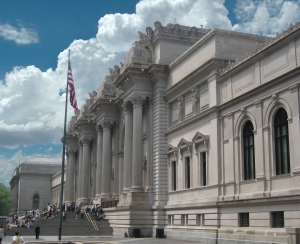
While a lot of time, thought, and care goes into the creation of exhibition catalogues, their lifespans tends to be short-lived. Unhappy with this accepted cycle, Thomas P. Campbell, director of the Metropolitan Museum of Art, decided to change things. The Museum’s new online resource, MetPublications, allows users to browse more than 600 catalogues, journals, and museum bulletins, including 368 out-of-print publications. It will even be possible to get copies of 140 of those out-of-print catalogues along with paperbound editions with digitally printed color reproductions through Yale University Press.
Spanning from 1964 to the present, topics covered include art, art history, archaeology, conservation, and collecting. MetPublications includes a description and table of contents for almost all of the periodicals and even offers information about the authors, reviews of the books, and links to related publications and art in the museum’s collection. The comprehensive resource will also provide links to purchase in-print books. If a reader is in need of a book but is not close to the museum or the book is not in the Museum’s holdings, MetPublications will direct them to WorldCat, a global library catalogue. Over time, the Met plans to add publications dating as far back as 1870, when then the museum was founded.
While other museums such as the Solomon R. Guggenheim Museum and the Los Angeles County of Museum of Art already have scholarly resources online, it is a welcome addition to the Met’s offerings.
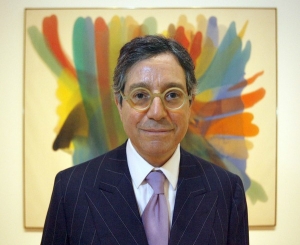
Los Angeles’ Museum of Contemporary Art moved into the digital realm on Monday with MOCAtv, the Museum’s YouTube channel devoted solely to contemporary art. In order to up the number of subscribers, MoCA will throw in a free three-month membership to the physical institution for anyone who subscribes to the channel between now and October 21st.
MOCAtv offers viewers a glimpse into the artistic process via six mini-channels including Artist Video Projects, The Artist’s Studio, Art in the Streets, Art + Music, MOCA U, and YouTube Curated by. MOCAtv debuted with 10 short videos from artists such as Alexis Smith, Mark Bradford, and Robbie Conal that explore the artists’ relationships to their work as well as footage of them in the midst of creating. The Museum also plans to air interviews connected to upcoming exhibitions.
Peppered with advertising content from YouTube’s parent company, Google, MoCA will receive a chunk of the channel’s advertising revenue after Google takes back what the Museum owes them for the development, programming, and operation of MoCAtv.
MoCA and its director, Jeffrey Deitch, have suffered many woes lately. Critics claim Deitch has destroyed the Museum’s integrity during his two-year reign, focusing more on glitz and celebrity than the art itself. This past June curator Paul Schimmel left the museum after 22 years and took all of the artists on MoCA’s board with him including Ed Ruscha, John Baldessari, and Barbara Kruger. While many suspected MoCA’s end was near, it doesn’t appear that Deitch or the Museum have given up just yet.
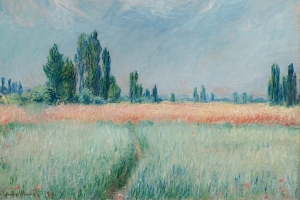
On November 5th, the Cleveland Museum of Art will auction off one of its six Claude Monet paintings in New York. Wheat Field (1881) carries an estimated price of $5–$7 million and the museum hopes to use the funds from the sale to strengthen its early 20th century European painting and sculpture collection, an area that has been lacking.
The Museum decided to auction Wheat Fields shortly after David Franklin was named the Museum’s director in 2010. Franklin did not think the painting could hold its own next to to the other five Monets in the museum’s collection including a widely admired Water Lily painting and the seminal, Red Kerchief.
Since Wheat Field was donated to the museum in 1947 as an unrestricted gift of Mrs. Henry White Cannon, the museum is able to sell the painting without fear of complaint from the donor’s family. The Museum would like to acquire a painting by The Scream artist, Edvard Munch, or Wassily Kandinsky, the pioneering Russian abstractionist, to help round out their collection.
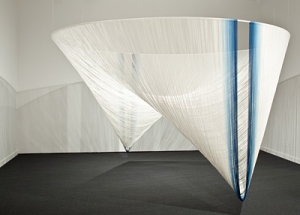
The Museum of Craft and Folk Art (MOCFA) will be closing its doors on December 1, 2012, the date marking the institution’s thirtieth anniversary. Founded in 1982 by craft artist and well-known sculptor, Gertrud Parker, MOCFA is the only folk art museum in Northern California.
After three decades, the Museum’s overseers felt that their mission, to bring recognition and legitimacy to craft and folk art in the contemporary art arena, had been achieved. The poor climate for smaller art institutions was undoubtedly a contributing factor.
Although the art market and leading museums now embraces contemporary artists who borrow from craft traditions, the innovative and daring venues that helped these artists get there are suffering. For instance, this past summer amid financial troubles, the American Folk Art Museum in New York was forced to sell its building on 53rd Street to the Museum of Modern Art and move to a smaller venue.
The MOCFA has exhibited hundreds of artists and significant local and national craft and folk art collections over the years. The Museum is devoted to collaborating with artists on commissions of new work as well as promoting artist-led projects and public programs. MOCFA has worked ardently to provide a place for makers and artists to come together and create, discuss, and learn. The Museum’s final exhibition, Fiber Futures: Japan’s Textile Pioneers, will be on view from now until December 1.
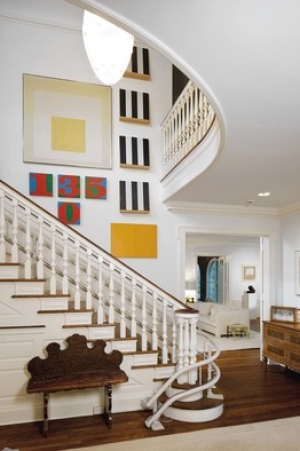
Starting in the 1950s, Rudolph and Hannelore Schulhof began building a 20th century art collection that has become the source of much speculation after the widowed Hannelore died this past February. Boasting nearly 350 works in total, Christie’s will auction 63 pieces from the collection including works by Joan Miro, Ellsworth Kelly, and Robert Indiana as part of its Impressionist and Modern Art Works sale and its Post-War and Contemporary Art sale in November. The sale is expected to bring in about $25 million. Christie’s will open the doors to the Schulhof’s Long Island mansion on Saturday, September 21 and Sunday, September 22 from 10AM to 5PM. Visitors will get a glimpse of an extraordinary, museum-quality collection. In fact, 100 of the works had previously been promised to three museums including the Peggy Guggenheim Collection in Venice as well as the Israeli Museum in Jerusalem and the Whitney Museum of American Art in New York.
The Sculhofs met in Vienna right before the start of World War II and married in Brussels in 1940. After traveling to the United States with extended family, Rudolph launched what would become a fine art reproduction company. When the couple first started collecting they tended to go after established names but were cajoled by the art dealer, Justin Thannhauser, to consider the art of their own time. As the Schulhof’s company had an office in Milan, they would frequent the city’s galleries as well as the Venice Biennale on their visits to Italy. It was on one of these trips that the Schulofs met the prominent American art collector, Peggy Guggenheim. A longtime friendship ensued, resulting in rapports with the artists themselves and the couple’s generous posthumous gift of 83 works to Guggenheim’s Venice institution. Another 200 artworks will remain in the Schulhof’s home and the family will decide on distribution in the future.
Three highly attended and widely acclaimed exhibitions at the Metropolitan Museum of Art generated about $781 million in spending by regional, national and foreign tourists this spring/summer season. Schiaparelli and Prada: Impossible Conversations, Tomas Saraceno on the Roof: Cloud City, and The Steins Collect: Matisse, Picasso, and the Parisian Avant-Garde are to thank for the impressive chunk of change.
The Metropolitan has employed a number of audience studies in recent years to calculate the public economic impact of its special exhibition program. With a direct tax benefit of $78.1 to New York City, it appears the program is well worth its while.
In total, 339,838 visitors came to the Met to see Schiaparelli and Prada and 323,792 patrons came to see The Steins Collect, which will remain on view though November 4, 2012. At the time of the study, Tomas Saraceno on the Roof drew the largest crowd with 368,370 visitors.

She’s almost 90 and still living very much in the present, quietly painting every day in her West Side studio. Yet Françoise Gilot — Picasso’s muse and lover and the mother of two of his children — is about to revisit her past.
In May, John Richardson, Picasso’s biographer, together with Valentina Castellani, a director of the Gagosian Gallery, will present an exhibition that chronicles the years when Ms. Gilot and Picasso were together — from roughly 1943 through 1952 — living in Vallauris, a small hillside town near Cannes in the south of France. It will be the gallery’s fourth Picasso exhibition and will include paintings, sculptures, drawings, pottery and prints.
Ms. Gilot doesn’t mind dredging up what must seem like many lifetimes ago. “When you are old your life has different chapters,” she said the other day, standing near a colorful abstract painting perched on an easel.
“I was an artist before I ever met Picasso,” she emphatically explained. Yet those years “are very much a part of my life.”
Like other blockbuster shows that are proliferating among some of today’s most prosperous galleries, Mr. Richardson believes the exhibition will be an eye-opener because “nobody realizes the tremendous importance of Françoise to Picasso during that whole period.”
The show, which will open at Gagosian’s newly renovated Madison Avenue gallery, is poised to generate as much excitement as the other Picasso shows that Mr. Richardson has masterminded. (The first, “Picasso: Mosqueteros,” in 2009 drew more than 100,000 visitors, a figure more normally associated with a museum exhibition.)
And the show, like all the others, will be a costly undertaking that involves getting loans from museums, publishing a lavish catalog with scholarly essays and bringing in an architect to redesign the gallery. It’s a lot of work and expense. Often dealers say nothing is for sale; generally, however, one or two works are available — at the right price — making these shows profitable after all.
Larry Gagosian says he believes that either way, the headaches were worth it. “Now we get offered all kinds of Picassos,” he said. “Everything from a print worth $4,000 to, well, the sky’s the limit.”
With his network of 11 galleries around the world, Mr. Gagosian is by far the most visible of all the dealers presenting these kinds of crowd-pleasing shows. But other blue-chip galleries including Acquavella and Pace have been presenting them on and off for decades. “I’ll never forget in the early ’70s when we had a Matisse show,” William Acquavella recalled. “We had people waiting on line in the pouring rain.”
His gallery, just two blocks north of Gagosian’s Madison Avenue headquarters, is attracting crowds right now with “Georges Braque: Pioneer of Modernism,” which opened on Oct. 12. The show, which was organized by Dieter Buchhart, an Austrian curator, includes 42 paintings, many on loan from museums including the Metropolitan Museum of Art, the Museum of Modern Art, the National Gallery of Art in Washington and the Tate in London. “It’s good advertising,” Mr. Acquavella said. “Braque is an amazing artist and hasn’t really gotten his due.”
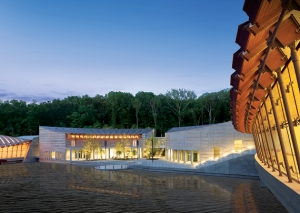
The opening of any major new American museum is news, especially when the museum has been designed by world-renowned architect, Moshe Safdie. But the opening of that museum in the heart of the Arkansas Ozarks sends reverberations through the art world.
Located in the heart of the nation, far from the urban art meccas of New York and Los Angeles, Crystal Bridges was founded by Alice Walton, daughter of Sam Walton of Walmart fame. The museum (Fig. 1) is situated at the bottom of a steep wooded ravine on a 120-acre park that was part of the Walton family’s original estate. Alice, who grew up roaming these woods, wanted a museum that worked in harmony with the surrounding forest, integrating the experience of art and nature for its visitors. A natural stream fed by Crystal Spring, which gives the museum its name, flows through the site and is spanned by two copper-roofed bridges housing galleries and the museum restaurant. The stream is dammed by weirs, producing two large ponds around which seven additional buildings are nestled.
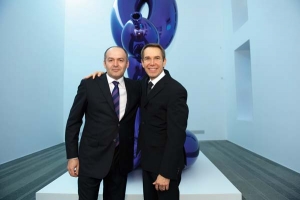
Post-Soviet Kiev is a city in transformation. There are new shops and restaurants; airports are expanding, and the Olympic stadium is being revamped in preparation for the 2012 European football championships to be hosted jointly by Ukraine and Poland. But perhaps nothing exemplifies change in the country’s capital so much as the crowds queuing up to see sharks in formaldehyde, balloon rabbits in stainless steel, and sculptures of sperm-wielding adolescents, works by Damien Hirst, Jeff Koons and Takashi Murakami respectively. All three artists have been shown for the first time in Ukraine at the Pinchuk Art Centre (PAC), a private museum of contemporary art in the centre of Kiev, which has just celebrated its fifth birthday.
Since its opening in 2006, nearly 1.2 million people have visited the gallery, which charges no admission and also includes a bookshop and a trendy bar with views over the city. Of these visitors, 60% are aged between 16 and 30. “Our society, especially young people, accepted contemporary art in a great way, in an unexpected way… there is a huge appetite for it,” says Victor Pinchuk, the steel magnate and billionaire who finances the museum and who has put himself at the centre of efforts to modernise Ukraine.
Pinchuk recently gave The Art Newspaper a rare interview on his estate outside Kiev, where he told us the success of his gallery has encouraged him to attempt a bigger, much more ambitious museum project. PAC is currently housed in an early 20th-century building in central Kiev which was once a hotel. But Pinchuk now wants to give it a new home in a purpose-built gallery designed by a top international architectural firm.
“It has to be an important building for our country, for our city. It has to be a destination for sightseeing tours in Kiev. I hope the image of this art centre will be on the most popular postcards… it has to be,” he says.
PAC hosts temporary exhibitions curated by museum staff and also shows a rotating display of work from Pinchuk’s own collection. The new gallery, in an “iconic” building, will do the same, says Pinchuk, who believes it could be ready within five years. He will not reveal the architects he is considering for the museum, however sources close to the project suggest Switzerland’s Herzog & de Meuron have been hired for the job.
An embarrassment of riches
Victor Pinchuk is an easy man to like. He is funny and charming and likes to gossip. He is also very, very rich. He trained as an engineer in the Soviet era, gaining a PhD from the Metallurgical Institute in Dnipropetrovsk in eastern Ukraine, before setting up his own company in 1990 to manufacture a new kind of metal tubing that he had invented. He went on to sell it all over the former Soviet Union. His fortune increased further after he met and married Elena, the daughter of the ex-president of Ukraine, Leonid Kuchma. The family connection helped Pinchuk secure Ukraine’s Kryvorizhstal steel company for $850m when the industry was privatised. Following the Orange Revolution, the sale was rescinded and the company was sold again, this time to Indian steel magnate Lakshmi Mittal for $4.8bn. Despite the setback, Pinchuk has gone on to even greater success. He diversified and in 2006 set up EastOne Ltd, an investment advisory company which controls several TV stations and the most popular tabloid newspaper in the country, as well as multiple industrial assets. Today, Forbes estimates Pinchuk’s fortune at $3.3bn.
With that much spending power comes enormous influence. Although Pinchuk has only taken a serious interest in art in the last five years, he is courted by museum directors the world over. When Pinchuk asks for a favour, one imagines few turn him down. Alfred Pacquement, Glenn Lowry, Richard Armstrong and Nicholas Serota, respectively directors of the Pompidou, MoMA, the Guggenheim and Tate, all serve on the board of Pinchuk’s Future Generation Art Prize, a $100,000 award given every two years to an artist under 35 of any nationality.

Strip malls and office parks line the landscape of this northwest Arkansas city at the foot of the Ozark Mountains.
Its downtown square has two eateries, a jewelry store, a courthouse and a statue of a Confederate soldier. Chain restaurants far outnumber locally owned ones.
At first glance, Bentonville — population 35,000 — seems an unlikely setting for a world-class art museum. But in a wooded ravine not far from the square, workers are putting the finishing touches on what will be one of the world's most important museums of American art.
The Crystal Bridges Museum of American Art is set to open here in November. It will be infused with an $800 million endowment by the family of the founders of Wal-Mart — four times that of the renowned Whitney Museum in New York.
It's the brainchild of Alice Walton, 62, daughter of Wal-Mart founder Sam Walton and an heiress to the Walton family fortune.
Alice Walton's acquisition of some of the country's most important pieces of American art, and the fact that they soon will hang in this rural corner of middle America, have rattled the art world.
Walton's backers say that legendary paintings such as Norman Rockwell's Rosie the Riveter, now part of the Crystal Bridges collection, deserve to be seen in rural America, not just in big cities such as Boston, New York and Los Angeles.
"Some people cannot process the thought that fine art and Arkansas can go together," Bentonville Mayor Bob McCaslin says. "Obviously, they can."
Wal-Mart, headquartered in Bentonville, is the world's largest retailer, with 8,400 stores worldwide and annual sales of more than $405 billion. The museum is just 2 miles and a five-minute drive away from Wal-Mart's sprawling world headquarters on Southwest Eighth Street.
Sam Walton started the retail empire with a small five-and-dime store in the downtown square in 1950. (Today, it's the Wal-Mart Visitor's Center.) Alice Walton grew up playing in the nearby woods.
Critics of the new Crystal Bridges Museum, such as author Rebecca Solnit and Ned Cramer, editor of Architecture magazine, argue that Walton — the third-richest woman in the world with an estimated worth of $21.2 billion, according to Forbes.com — has used her wealth to poach paintings that should remain in their home cities.
Walton's 2005 acquisition of Asher B. Durand's Kindred Spirits through a sealed auction from the New York Public Library for $35 million, for example, was equated by then-New York Times art critic Michael Kimmelman to the destruction of Penn Station.
Alice Walton declined to be interviewed for this article.
Controversy aside, Crystal Bridges Museum will be one of the most important museums to open in the nation's history, says Lindsay Pollock, editor of Art in America magazine.
"We don't really know what we're going to see down there, but it's going to be a huge shot of adrenaline for the field," she says.
The museum "will demand attention on a global playing field."
|
|
|
|
|